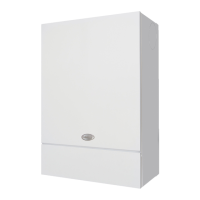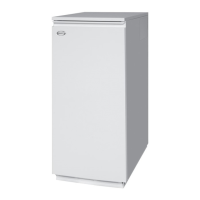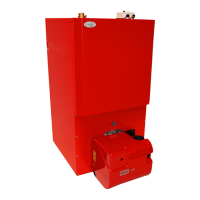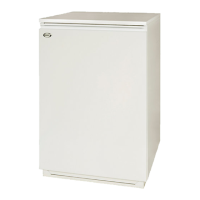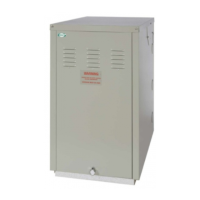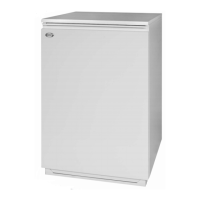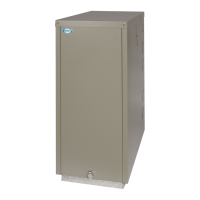Section 7: Sealed Systems Page 21
7.3 VENTING THE PUMP
For those heating circulating pumps tted with a vent plug, it is
important that the pump is properly vented to avoid an air lock and
also prevent it running dry and damaging the bearings.
Unscrew and remove the plug from the centre of the pump motor.
Using a suitable screwdriver, rotate the pump spindle about one
turn. Replace the plug in the motor. Do not over tighten.
! NOTE !
Some heating circulating pumps are not tted with a
vent plug so it is not possible to vent these pumps in the
manner described above. Refer to pump manufacturers
own instructions for further details.
If a Wilo Para pump is used, please refer to Appendix A2
at the back of this installation and servicing manual for
guidance on venting the pump.
7.4 PRESSURE RELIEF (SAFETY)
VALVE OPERATION
Check the operation of the pressure relief (safety) valve as
follows:
1. Turning the head of the valve anticlockwise until it clicks. The
click is the safety valve head lifting o its seat allowing water
to escape from the system.
2. Check that the water is escaping from the system.
3. Top-up the system pressure, as necessary.
7.2 FILLING THE SEALED SYSTEM
Filling of the system must be carried out in a manner approved by
the local Water Undertaking.
! WARNING !
Only ever ll or add water to the system when it is cold and
the boiler is o. Do not overll.
The procedure for lling the sealed system is as follows:
1. Check the air charge pressure in the expansion vessel
BEFORE lling the system.
! NOTE !
The air charge pressure can only be correctly checked
when the system water pressure is zero.
The expansion vessel air charge pressure should always be
slightly greater than the maximum static head of the system,
in bar, at the level of the vessel (1 bar = 10.2 metres of
water).
For example: If the height to the top of the highest radiator
from the centre of the expansion vessel is 5metres, then the
static head at the vessel would be 0.5 bar. Refer to Figure
7-1.
The air charge pressure must not be less than the actual
static head at the point of connection.
! NOTE !
The air charge pressure may be checked using a tyre
pressure gauge on the expansion vessel Schraeder valve.
The vessel may be re-pressurised, when necessary, using
a suitable pump. When checking the air charge pressure,
the water in the heating system must be cold and the
system pressure reduced to zero.
2. Check all air vents are fully open. Refer to Figure 5-1.
3. Ensure that the exible lling loop is connected between the
double check valve (on the cold water pipe) and the lling
point on the drain cock connection in the lower right corner of
the boiler.
Also ensure that the shut o valves on both the double check
valve and the ll point are closed.
Note that these valves are open when the operating lever is
in line with the valve, and closed when it is at right angles to
it.
4. Open the shut o valve on the ll point valve.
5. Gradually open the shut o valve on the double check valve
until water is heard to ow into the system from the cold
water supply.
6. When the needle of the pressure gauge is between 0.5 and
1.0 bar, close the shut o valve on the double check valve.
7. Vent each radiator in turn, starting with the lowest one in the
system, to remove air.
8. Continue to ll the system until the pressure gauge indicates
between 0.5 and 1.0 bar. Close the ll point valve.
The system ll pressure (cold) should be 0.2 - 0.3 bar greater
than the vessel air charge pressure.
Refer to the Domestic Heating Design Guide for further
information if required.
9. Repeat steps 5 to 7 as required until system is full of water at
the correct pressure and vented.
10. Water may be released from the system by manually
operating the safety valve until the system design pressure is
obtained.
11. Close the shut o valves on the ll point and double check
valves and disconnect the lling loop.
12. Check the system for water soundness, rectifying where
necessary.
! NOTE !
For information on the circulating pump tted to all Vortex
Pro combi models, please refer to Appendix A1 or A2
as required at the back of this installation and servicing
manual.
